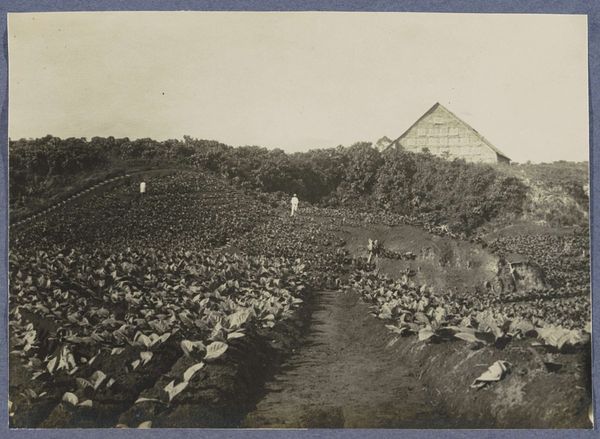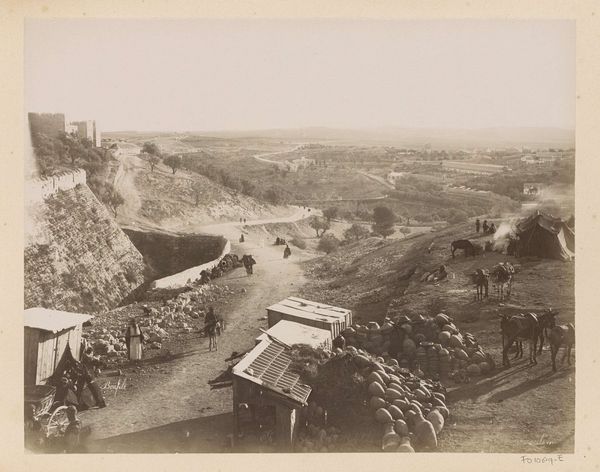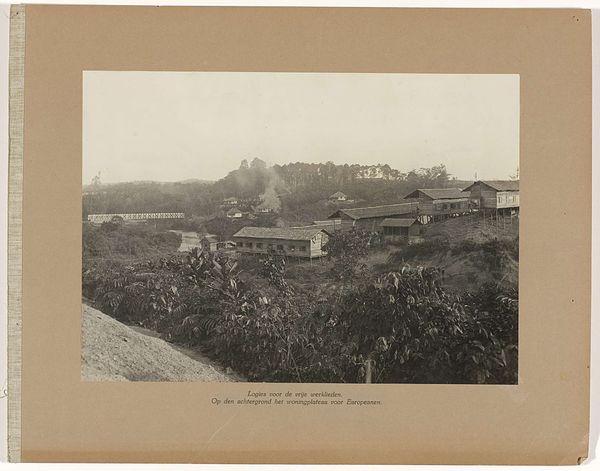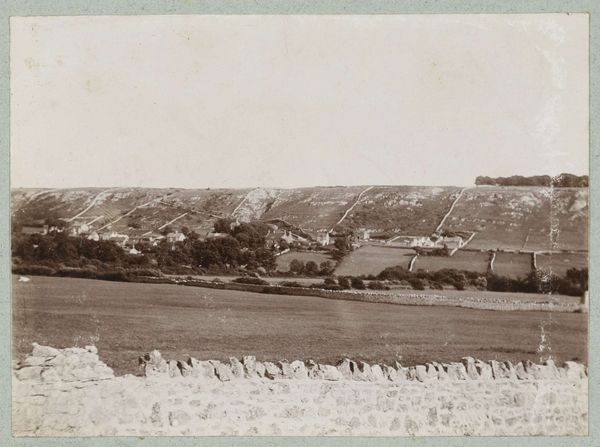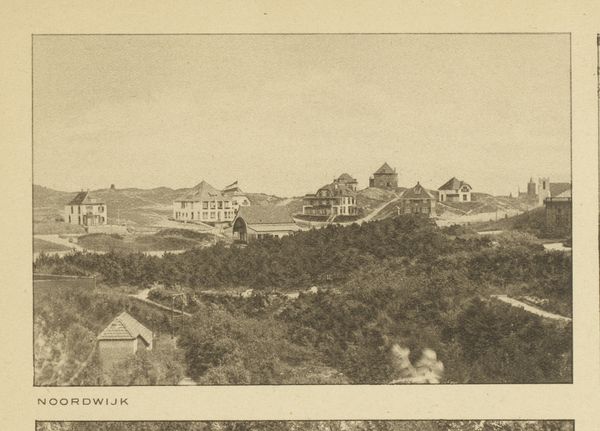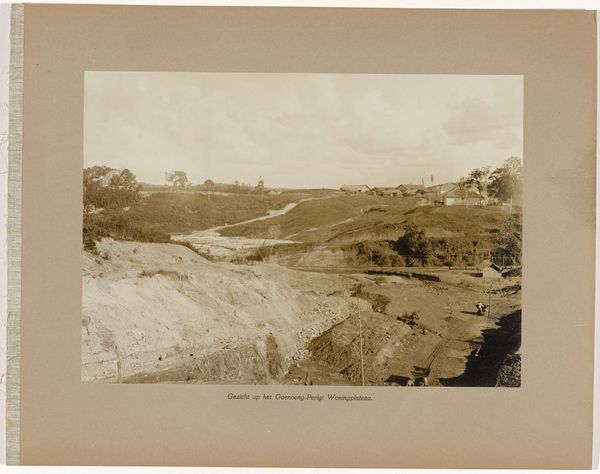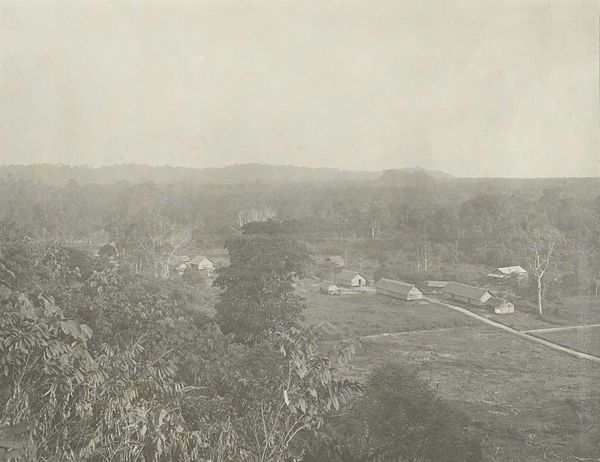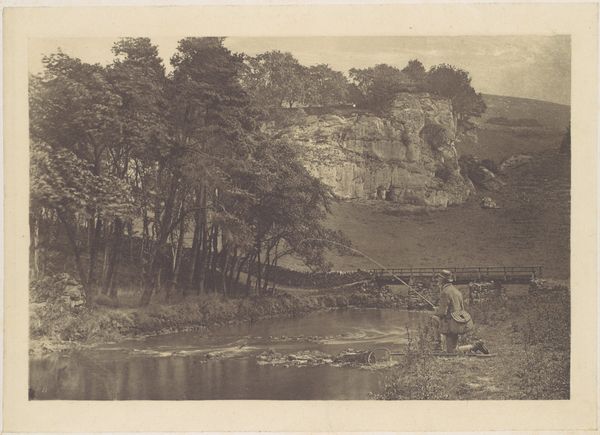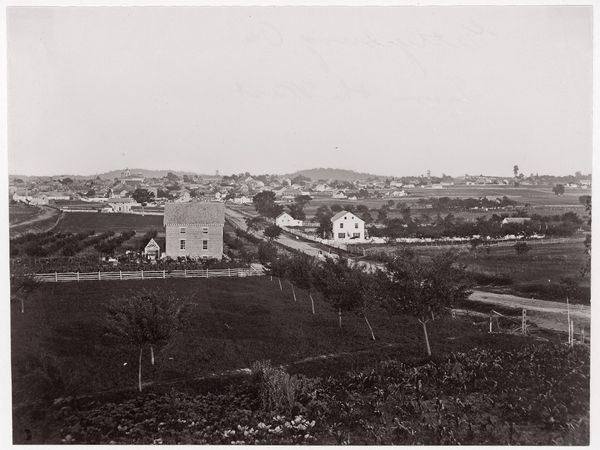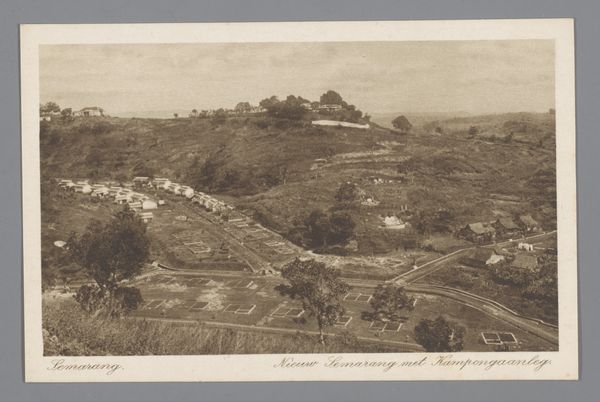
Tabaksveld op het Bindjey Estate van de Deli-Batavia Maatschappij op Sumatra (op dag van aanplant) c. 1900 - 1920
0:00
0:00
anonymous
Rijksmuseum
print, photography
#
pictorialism
# print
#
landscape
#
indigenism
#
photography
#
realism
Dimensions: height 140 mm, width 189 mm
Copyright: Rijks Museum: Open Domain
Curator: This print, taken sometime between 1900 and 1920, offers us a view of a tobacco field at the Bindjey Estate of the Deli-Batavia Maatschappij on Sumatra. Editor: It’s incredibly still, almost like a staged tableau. The light and the monochromatic tones lend it a sense of timelessness, though there’s also a distinct feeling of…isolation, wouldn't you say? Curator: I see the isolation you describe. Look at how the anonymous photographer employs techniques characteristic of pictorialism, using the soft focus to perhaps aestheticize and even distance the viewer from the realities of colonial agriculture. Editor: Precisely. Pictorialism, usually presented as being in opposition to straight photography, seems almost complicit here, sanitizing a system of colonial resource extraction by romanticizing the landscape. What's particularly striking is how small the figures are in relation to the land; we only see laborers almost blending into the landscape, with the only one prominently featured being possibly a western plantation supervisor. Curator: And how do we interpret that choice, that figure standing apart? Is he a symbol of progress, a benevolent overseer as he might want to be viewed? The architectural presence in the backdrop can be read as a monument of industry, a signal of power. I find it interesting how even this depiction of labor—ostensibly of agriculture, is so shaped by hierarchies. Editor: Right. The visual elements tell a specific story that serves institutional powers. This estate and company obviously played a significant role in the economy of the region, not without human cost I imagine, judging by how efficiently the workers were placed within its composition like commodities in production, as an economic engine viewed from an outsider's vantage. Curator: Thinking about visual languages – the photograph’s very composition speaks volumes about power dynamics. What endures, though, is the way a singular photograph can stir so many questions about a global past. Editor: It serves as an example of how photography and the arts, consciously or not, are involved in a dialogue shaping historical, social and individual memory of a particular cultural landscape.
Comments
No comments
Be the first to comment and join the conversation on the ultimate creative platform.
